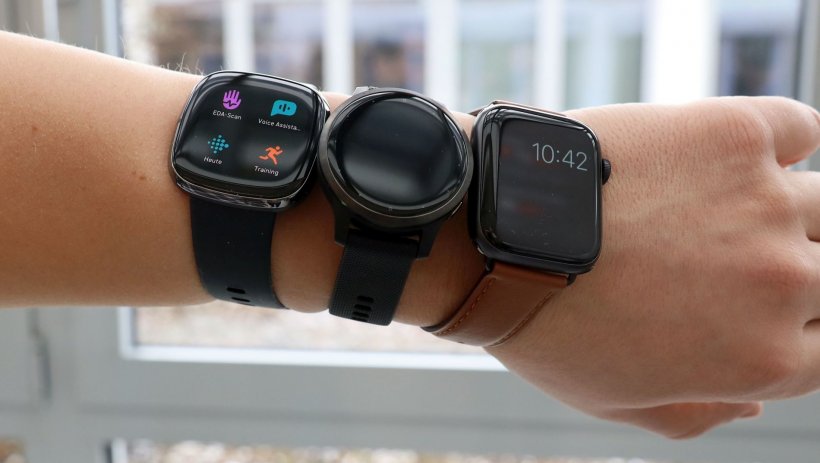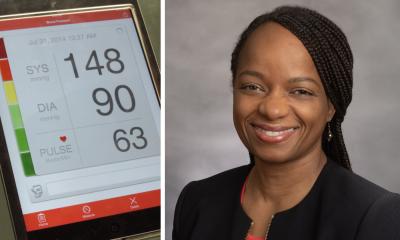
Image source: Landshut University of Applied Sciences
News • On the go
Improving wearables for medical applications
Cardiovascular diseases are the most common cause of fatalities in Germany. Medical wearables which measure vital parameters such as the blood pressure, heart rate and blood oxygen levels in real time could help detect these diseases early, and treat them on a preventive basis.
In daily life and during sports activities, in the form of fitness bracelets or smart watches, these small, portable mini-computers are already enjoying great popularity. They are now also being used increasingly frequently in the world of medicine. The problem, however, is that mobile systems of this kind aren’t always free of bugs. Most wearables, for example, measure vital parameters using the PPG (photoplethysmography) method. This can lead to signal interference if, for example, the sensors slip out of place during movements. The world of medicine depends on reliable measurements, however. This is exactly where the new “Deep PPG” research project at Landshut University of Applied Sciences, overseen by Prof. Dr. Andreas Breidenassel, is stepping in. Its goal is to reduce the susceptibility of the PPG signal to interference and to therefore enable more accurate measurements of wearables for medical applications. The company Osram Opto Semiconductors is participating in the project. The Bavarian State Ministry of Science and the Arts is supporting the project with funding of € 250,000.

Image source: Landshut University of Applied Sciences
“As we continue to develop the sensors and improve the data quality of the wearables, this data can be used more and more effectively for diagnosis in the future,” explains Breidenassel. In this respect, it is important that the wearables not only monitor patients at risk, but that they also evaluate data from previously healthy people in everyday situations. In this way, they could serve as an early warning system and diagnose illnesses before those affected notice them themselves. This would allow for quicker treatment. The technical principle behind the medical wearables is based on an optical measurement: light emitting diodes (LEDs) emit green, red or infra-red light. This light shines through the tissue or is reflected on the skin surface and then hits a photo detector. This signal can then be used, for example, to derive the heart rate or the level of oxygen saturation in the blood.
The PPG method is a straightforward, cost-effective measurement technique and captures important, health-related data
Andreas Breidenassel
However, movement artefacts and different skin types can have a major effect on the accuracy of the measurements, however. To reduce this interference and to improve the data quality, together with his colleague Prof. Dr. Stefanie Remmele and research assistant Maximilian Reiser, Breidenassel is investigating two approaches: “On the one hand, we want to use several light sources and sensors at different positions and to analyse the resulting data in real time with the use of algorithms,” explains Reiser, “in this way, it is more likely that we will receive an analysable signal, also during movement.” The challenge, however, is that the system has to recognise which light-sensor combination provides the best signal at any given moment in real time. To this end, the researchers are developing an intelligent algorithm and feeding it significant amounts of data based on subject studies for the purpose of training it.
In the second approach, the research team is replacing the LEDs with vertical cavity surface emitting lasers (VCSELs), which are finding increasing use in smart phones. Their advantage: the low beam divergence could lead to a more efficient use, lower stray light, and therefore to a stronger signal acquisition against interference. “It is in the combination of these approaches – multi-light sources, intelligent algorithms and the use of laser diodes – that we expect to see significant improvements in the data quality,” says Breidenassel. Should this succeed, it would be a great benefit to society and medicine: “The PPG method is a straightforward, cost-effective measurement technique and captures important, health-related data. At the same time, wearables are becoming an increasingly important part of our everyday lives. Making use of this trend for medicine is therefore a good idea.”
Source: Landshut University of Applied Sciences
16.02.2021











